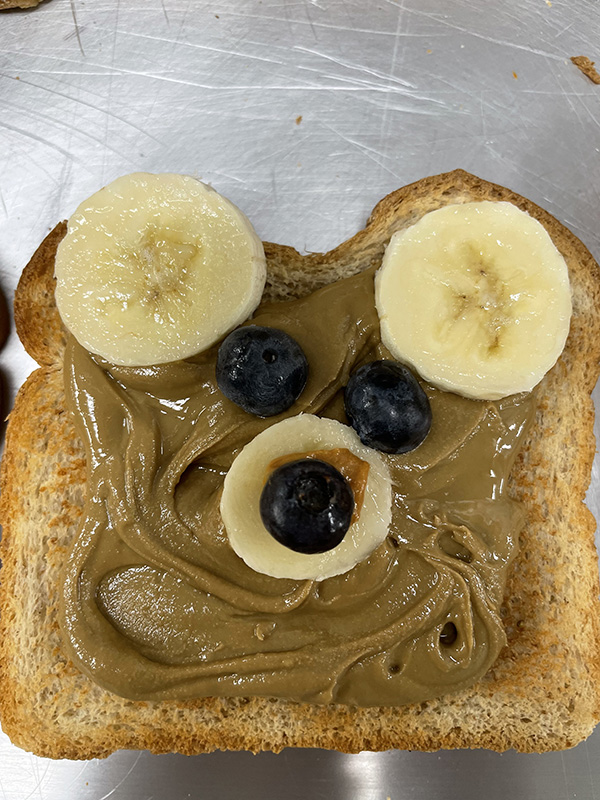 A balanced and nutritious diet is essential for a child for so many reasons! Food nourishes the body, provides energy and supports healthy development.
A balanced and nutritious diet is essential for a child for so many reasons! Food nourishes the body, provides energy and supports healthy development.
Nutrition during preschool years is another opportunity for Weekday Preschool and parents to teach children about healthy food options and how good choices support healthy bodies.
“In the 2009 session, the North Carolina (NC) General Assembly created the Legislative Task Force on Childhood Obesity. The Task Force was created to study issues related to childhood obesity, and to consider and recommend to the General Assembly strategies for addressing the problem of childhood obesity, including the encouragement of healthy eating and increased levels of physical activity. Early childhood interventions and the role of childcare facilities were also studied.
In July 2010, the NC Child Care Commission (NCCCC) created licensing requirements to increase physical activity and breastfeeding opportunities in child care facilities (10A NCAC 09. 0508(b)(4), 10A NCAC 09.0508(c), and 10A NCAC 09. 0901(h)) (Appendix A). To further encourage healthy eating practices in NC child care facilities, the Legislative Task Force enacted SL 2010-117 (Appendix B). In legislation, the NCCCC, in consultation with the Division of Child Development (DCD), was directed to develop enhanced nutrition standards for child care facilities. In the process of developing such standards, NCCCC was directed to consider the following recommendations:
- Limiting or prohibiting the serving of sweetened beverages, other than 100% fruit juice, to children of any age.
- Limiting or prohibiting the serving of whole milk to children two years of age or older or flavored milk to children of any age.
- Limiting or prohibiting the serving of more than six ounces of juice per day to children of any age.
- Limiting or prohibiting the serving of juice from a bottle.
- Creating an exception from the rules for parents of children who have medical needs, special diets, or food allergies.
- Creating an exception from the rules to allow a parent or guardian, or to allow the center upon request of a parent or guardian, to provide to a child food and beverages that may not meet the nutrition standards.
To further inform the development of enhanced nutrition standards, the General Assembly, through SL 2010-117, also directed the Division of Public Health (DPH) to complete a study of the current standards and to submit a final report by December 31, 2010. This study was to be completed “in conjunction with DCD, nutritionists, pediatricians and child care providers,” and was to “be conducted in consideration of any potential changes in the federal guidelines related to the Child and Adult Care Food Program (CACFP).”
CACFP is a federal food and nutrition assistance program that targets infants, children, and impaired or older adults from low-income households. CACFP is funded by the United States Department of Agriculture (USDA), administered by state agencies, and delivered through child and adult day care facilities. To receive reimbursement, facilities must document compliance with the CACFP meal pattern guidelines, which vary by age of the participant (Appendix C). In NC, CACFP has a broad reach as all childcare facilities are required to follow the CACFP meal pattern guidelines (10A NCAC 09 .0901(a) and 10A NCAC 09 .1718(a)(1)). In NC, CACFP guidelines impact the practices of 4,978 regulated centers and 3,632 regulated homes, reaching 265,123 children.1 Because the CACFP meal pattern guidelines are primarily based on nutrition and health advice from 1989, USDA recently funded the Institute of Medicine (IOM) to develop a set of recommendations that would better align the CACFP meal pattern guidelines with the Dietary Guidelines for Americans (DGAs).
The USDA revised the CACFP meal patterns to ensure children and adults have access to healthy, balanced meals throughout the day. The changes made were based on the Dietary Guidelines for Americans, scientific recommendations from the National Academy of Medicine, stakeholder input, and cost and practical considerations. Under the revised meal patterns, meals served will include more whole grains, less saturated fat, a greater variety of fruits and vegetables, and less added sugar.”
Parents may see the USDA Child Meal Patterns to understand how Weekday Preschool plans meals. Parents opting to send meals from home must send meals that comply with the patterns. (Read more about the childcare nutrition rules and parents’ rights to opt in or out of food service in the Handbook and in the registration packet.)
RESOURCES
North Carolina Enhanced Nutrition Standards for Childcare: Final Report to the General Assembly
https://ncchildcare.ncdhhs.gov/Portals/0/documents/pdf/C/child_nutrition_study.pdf
Meal Patterns and Nutrition Resources
https://www.nutritionnc.com/snp/meal-patterns.htm
Nutrition Standards for CACFP Meals and Snacks
https://www.fns.usda.gov/cacfp/meals-and-snacks
USDA Child Meal Patterns
https://fns-prod.azureedge.net/sites/default/files/cacfp/CACFP_childmealpattern.pdf
